Vergleich zwischen Edelstahl und Kupfer bei Bierbraugeräten
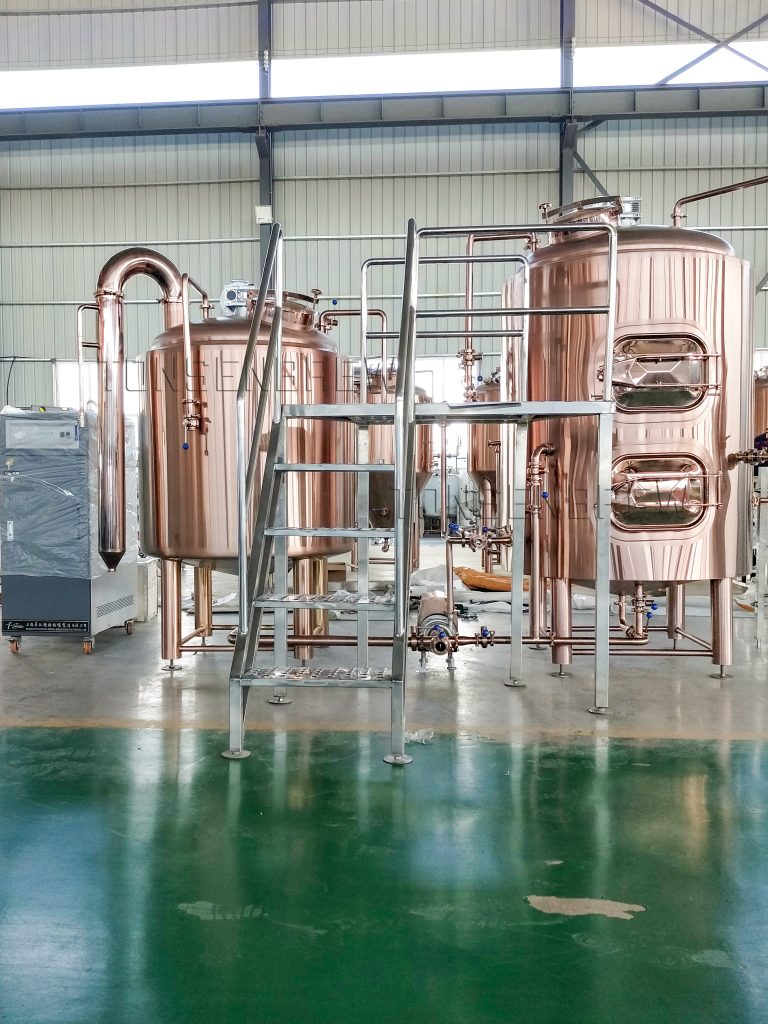
Vergleich zwischen Edelstahl und Kupfer bei Bierbraugeräten
Wenn es um die Auswahl des richtigen Bierbrauanlagenist eine der wichtigsten Entscheidungen die Wahl zwischen rostfreier Stahl und Kupfer. Beide Materialien haben ihre einzigartigen Vor- und Nachteile, und wenn Sie diese kennen, können Sie eine fundierte Entscheidung für Ihre Brauanlage treffen. In diesem Artikel vergleichen wir Edelstahl und Kupfer in Bierbraugeräten und konzentrieren uns dabei auf Haltbarkeit, Wärmeleitfähigkeit, Wartung und Gesamtleistung.
1. Langlebigkeit: Edelstahl übernimmt die Führung
Rostfreier Stahl ist bekannt für seine Haltbarkeit und Korrosionsbeständigkeit. Es ist ein nicht reaktives Material, das heißt, es reagiert nicht mit den Säuren und Verbindungen, die während des Brauprozesses im Bier vorhanden sind. Dies macht Geräte aus Edelstahl zu einer langlebigen Investition sowohl für Hausbrauer als auch für gewerbliche Brauereien.
Andererseits, Kupfer ist anfällig für Oxidation und kann mit der Zeit eine Patina entwickeln. Manche Brauer schätzen die Ästhetik von gealtertem Kupfer, aber es muss häufiger gewartet werden, um Korrosion zu verhindern und seine Funktionalität zu erhalten.
SEO-Tipp: Wenn Sie auf der Suche nach langlebigen BierbrauanlagenEdelstahl ist aufgrund seiner Langlebigkeit und seines geringen Wartungsaufwands häufig die erste Wahl.
2. Wärmeleitfähigkeit: Der Vorteil von Kupfer
Ein Bereich, in dem Kupfer glänzt durch seine außergewöhnliche Wärmeleitfähigkeit. Kessel und Kessel aus Kupfer erhitzen sich schnell und verteilen die Wärme gleichmäßig, was für gleichbleibende Ergebnisse während des Brauprozesses entscheidend ist. Dies kann zu einer besseren Temperaturkontrolle und einem effizienteren Kochvorgang führen.
Rostfreier StahlEdelstahl ist zwar langlebig, hat aber im Vergleich zu Kupfer eine geringere Wärmeleitfähigkeit. Viele moderne Brühsysteme aus Edelstahl sind jedoch mit zusätzlichen Merkmalen ausgestattet, wie z. B. dicken Böden oder integrierten Heizelementen, um diesen Nachteil auszugleichen.
SEO-Tipp: Wenn Wärmeeffizienz eine Priorität für Ihr Unternehmen ist BierbrauanlagenKupfer mag die bessere Option sein, aber auch Edelstahlsysteme mit fortschrittlichem Design können hervorragende Leistungen erbringen.
3. Wartung: Rostfreier Stahl ist leichter zu reinigen
Wenn es um die Wartung geht, rostfreier Stahl ist der klare Sieger. Er ist porenfrei, daher bakterienresistent und leicht zu reinigen. Ein einfaches Abspülen und Desinfizieren reicht in der Regel aus, um Geräte aus Edelstahl in Topform zu halten.
Kupfererfordert jedoch mehr Pflege. Es muss regelmäßig poliert werden, um ein Anlaufen zu verhindern, und gründlich gereinigt werden, damit sich keine Rückstände ablagern, die den Geschmack Ihres Bieres beeinträchtigen können. Außerdem kann Kupfer mit bestimmten Reinigungsmitteln reagieren, so dass Sie spezielle Produkte verwenden müssen.
SEO-Tipp: Für Brauer auf der Suche nach wartungsarmen Bierbrauanlagenist rostfreier Stahl die ideale Wahl.
4. Ästhetische Anziehungskraft: Der zeitlose Charme des Kupfers
Neben der Funktionalität spielt auch die Ästhetik eine wichtige Rolle bei der Auswahl von Brauereigeräten. Kupfer hat ein klassisches, zeitloses Aussehen, das viele Bierbrauer anziehend finden. Die glänzende, reflektierende Oberfläche kann jeder Brauerei einen Hauch von Eleganz verleihen.
Rostfreier Stahlist zwar schlank und modern, hat aber nicht den traditionellen Charme von Kupfer. Die polierte Oberfläche verleiht Ihrer Brauerei jedoch ein professionelles Aussehen.
SEO-Tipp: Wenn Sie Wert auf die optische Attraktivität Ihres BierbrauanlagenKupfer bietet eine einzigartige und traditionelle Ästhetik.
5. Kosten: Edelstahl ist budgetfreundlich
Was die Kosten betrifft, rostfreier Stahl ist im Allgemeinen erschwinglicher als Kupfer. Der höhere Preis von Kupfer ergibt sich aus den Materialkosten und dem handwerklichen Aufwand, der erforderlich ist, um das Material zu Braugeräten zu verarbeiten. Edelstahl ist leichter erhältlich und einfacher herzustellen und daher eine kostengünstige Option für Brauer mit kleinem Budget.
SEO-Tipp: Für alle, die erschwingliche und dennoch hochwertige Bierbrauanlagenist rostfreier Stahl die wirtschaftlichere Wahl.
6. Auswirkungen auf den Geschmack: Beeinflusst das Material den Geschmack?
Eine häufige Frage ist, ob das Material der Brauanlage den Geschmack des Bieres beeinflusst. Rostfreier Stahl ist nicht reaktiv, d. h. es überträgt keine Aromen auf Ihr Bier. Dies macht es ideal für Brauer, die das Geschmacksprofil ihres Bieres vollständig kontrollieren wollen.
KupferKupfer ist zwar im Allgemeinen sicher, kann aber mit bestimmten Verbindungen im Bier reagieren, wenn es nicht richtig gepflegt wird. Dies kann zu Fehlaromen führen, obwohl viele Brauer argumentieren, dass die Vorteile von Kupfer diesen potenziellen Nachteil überwiegen.
SEO-Tipp: Wenn die Konsistenz des Geschmacks im Vordergrund steht, ist Edelstahl Bierbrauanlagen ist die sicherere Variante.
Schlussfolgerung: Was ist besser für Bierbrauanlagen?
Beide rostfreier Stahl und Kupfer haben ihren Platz in der Welt des Bierbrauens. Edelstahl ist langlebig, pflegeleicht und kostengünstig, was ihn zu einer beliebten Wahl für moderne Bierbrauer macht. Kupfer hingegen bietet eine hervorragende Wärmeleitfähigkeit und eine klassische Ästhetik, erfordert aber mehr Pflege und ist teurer.
Letztendlich hängt die beste Wahl von Ihren Brauereizielen, Ihrem Budget und Ihren persönlichen Vorlieben ab. Ob Sie sich für Edelstahl oder Kupfer entscheiden, die Investition in hochwertige Bierbrauanlagen ist für die Herstellung von außergewöhnlichem Bier unerlässlich.
Verwandte Empfehlungen
Was ist ein Bright Tank und wie er die Bierqualität verbessert?
1173Erfahren Sie, wie ein heller Tank die Klarheit, die Karbonisierung und die Stabilität des Biers verbessert und so ein hochwertiges, abfüllfertiges Bier gewährleistet.
Details anzeigenKontrolle der Gärung: Bewährte Praktiken für gleichbleibende Bierqualität
1564Sorgen Sie für eine gleichbleibende Bierqualität mit dem richtigen Gärtank und Gärsystem für optimale Brauergebnisse.
Details anzeigenDie Rolle des Gärgefäßes bei der Herstellung des perfekten Bieres
1292Wenn es darum geht, hervorragendes Bier zu brauen, ist der Gärbehälter ein unbesungener Held. Dieses wichtige Ausrüstungsteil beherbergt nicht nur die Magie der Hefe, die Zucker in Alkohol umwandelt, sondern beeinflusst auch Geschmack, Klarheit und Konsistenz...
Details anzeigenMaximierung der Effizienz: Tipps zum Testen Ihrer kommerziellen Bierbrauanlage
781Steigern Sie die Effizienz Ihres kommerziellen Bierbrauens mit Tipps von Experten. Testen, optimieren und warten Sie Ihr System, um Qualität und Kosten zu sparen.
Details anzeigen
 Shandong Tonsenbrew Co., Ltd.
Shandong Tonsenbrew Co., Ltd.

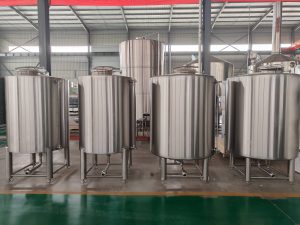
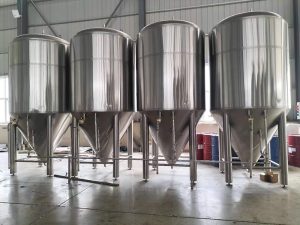
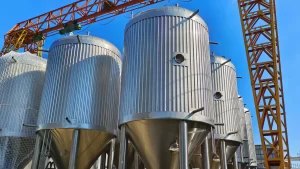
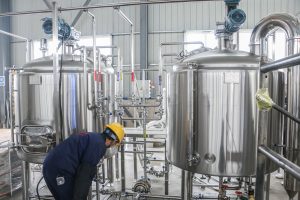
HalloBitte melden Sie sich an